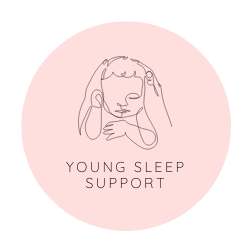
So you’ve tried everything—following wake windows, adjusting naps, tweaking bedtime… but your child’s sleep still isn’t improving. The pressure to sleep train is everywhere, yet something about it doesn’t feel right to you.
Here’s what I want you to know. Healthy sleep doesn’t require sleep training. But it does require understanding what’s really going on.
Many common sleep disruptions aren’t because your child is being “difficult” or because they need to learn to “self-soothe.” Instead, they stem from biological rhythms, developmental progressions, and emotional regulation. The problem? The most widely shared sleep advice often oversimplifies sleep science and ignores individual needs.
If you’re struggling, here’s what might be happening, and what you can do instead of sleep training.
1. You’re Following a Generic Sleep Schedule Meant for Someone Else’s Child
Why This Happens
- → You search for help and come across sleep schedules based on specific wake windows or hours of sleep.
- → These charts look authoritative but are actually based on averages, not guarantees.
- → Most sleep charts list the maximum recommended sleep, not what every child needs.
In reality, children’s sleep needs vary widely. Some babies naturally function well on 11 hours of total sleep a day, while others need 15 hours. The idea that every 8-month-old should nap twice a day for exactly 3 hours total is an oversimplification.
When a schedule is off, you’ll see signs like:
✅ Split nights (child wakes for long periods overnight)
✅ Frequent early wakings (before 6 AM)
✅ Bedtime resistance (they aren’t tired enough yet)
What to Do Instead
- → Observe your child’s natural rhythms—when do they naturally get tired?
- → Adjust wake times and naps based on their cues, not a strict chart.
- → Use a sleep log for a week to find patterns instead of forcing a set schedule.
💡 Case Study: One of my clients was following an 8 month old schedule with a 7 PM bedtime. Her baby fought bedtime daily and woke at 5 AM. After tracking his natural rhythms, she moved bedtime to 8 PM, shortened daytime naps slightly, and he began waking at 6:30 AM naturally.
2. Sleep Pressure Isn’t Lining Up with Sleep Needs
Why This Happens
- → You’re told “sleep breeds sleep,” but too much sleep can also backfire.
- → Overtiredness doesn’t prevent sleep. Dysregulation does.
- → If a child is already well-rested within their 24-hour cycle, forcing more sleep won’t help.
Key myth: Overtired babies won’t sleep. The reality? Being overtired causes stress hormones to rise, which leads to dysregulation.
Many overtired babies do fall asleep, but their nervous system remains dysregulated, causing more frequent waking.
Similarly, too much daytime sleep can lead to more night wakings because sleep needs were already met.
What to Do Instead
- → Instead of assuming “more sleep is better,” focus on total 24 hour sleep balance.
- → If your child struggles with bedtime resistance or split nights, try trimming naps slightly and see how they adjust.
- → If they’re overtired, focus on nervous system regulation (lots of connection, low-stimulation wind-down time) instead of worrying about wake windows.
💡 Case Study: I worked with the parents of a 14 month old who napping 3.5 hours daily, yet waking at 4 AM every night. His sleep total was 14.5 hours (high for his age). We shortened naps to 2.5 hours, and his morning wake time shifted to 6:30 AM.
3. Your Child’s Sleep Environment Is Sending Mixed Signals
Why This Happens
- → Sleep is highly sensory-driven—light, temperature, noise, and consistency all play a role.
- → Sleep associations (nursing to sleep, rocking) aren’t inherently bad at all, and if they’re working for you, there’s absolutely no need to change these. But for some children, if they wake up in a different environment than they fell asleep in, it can be disorienting.
- → Parents sometimes assume a child “hates the cot” when it’s actually about comfort or security needs.
What to Do Instead
- → Ensure environmental consistency: The space where they fall asleep should feel the same if they wake in the night.
- → Follow safe sleep guidelines while making their sleep space feel calm and comfortable (e.g., breathable sleep sacks, room temperature adjustments).
- → Try small adjustments first, like blackout curtains or white noise, before assuming something bigger needs fixing.
💡 Case Study: A toddler who struggled to transition to their own sleep space improved when parents kept a consistent bedtime routine and adjusted the room lighting and temperature to match what they were used to.
4. Emotional and Developmental Changes Are Affecting Sleep
Why This Happens
- → Sleep “regressions” aren’t bad—they’re a sign of brain development.
- → Separation anxiety peaks around 9-10 months and again at 18 months, which can lead to increased wake ups.
- → Milestones like crawling, walking, or talking cause temporary sleep disruptions.
Sleep is deeply tied to emotional security and nervous system regulation. A child who is learning a new skill or feeling anxious about separation will naturally seek more comfort at night.
What to Do Instead
- → Instead of trying to “fix” regressions, support them.
- → During the day, offer extra connection (baby wearing, skin-to-skin, playtime) to help them feel secure at night.
- → Expect temporary wake-ups and respond with calm reassurance rather than trying to “correct” the behaviour.
💡 Case Study: A client of mine whose toddler suddenly started waking every two hours at 18 months found that extra connection time before bed (reading, cuddling) led to reduced wakings within a week.
5. You’re Focused on Independent Sleep Before Your Child Is Ready
Why This Happens
- → Many parents feel pressured to have their baby “sleep through the night alone.”
- → Sleep training culture makes parents fear supporting their child = bad sleep habits.
- → But sleep is a developmental process, not a skill that can be forced.
The reality? Children gradually develop sleep independence when they’re emotionally and neurologically ready. Some sleep through early, while others take 2-3 years to consistently sleep all night.
What to Do Instead
- → Normalise nighttime comfort needs—it’s biologically normal.
- → Find sustainable, safe ways to support sleep, such as room-sharing, comforting touch, or gentle sleep associations.
- → Trust that independence comes naturally when needs are met, rather than forcing it early.
💡 Case Study: A family I worked with who transitioned their baby from a bassinet to a cot near their bed found that their child slept more peacefully with the comfort of a nearby presence, allowing for gradual independence at their own pace.
Final Thoughts.
- It’s not about “fixing” sleep. It’s about understanding it. Sleep isn’t something that needs to be “trained”—it evolves naturally when a child’s biological, emotional, and environmental needs are met.
If your child’s sleep isn’t improving, it’s not because you’re doing something wrong—it’s because mainstream advice often ignores what actually matters.
What to Do Now:
→ Which sleep struggle resonated with you most? Share in the comments!
→ Get started on improving your child’s sleep without sleep training, with my free Gentle Sleep Starter Kit!
